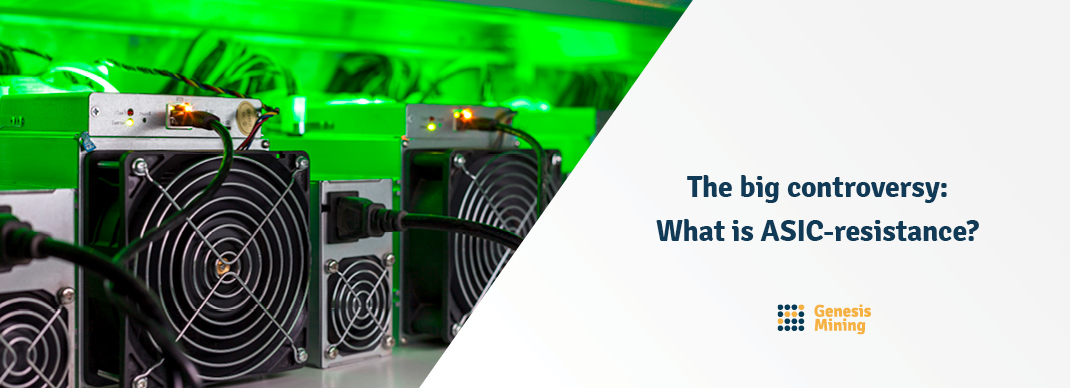[ad_1]
ASICs, or “Application Specific Integrated Circuit” are computers that are created to serve a specific use case and task. For Cryptocurrencies, ASIC devices are designed to participate in the process of mining Bitcoin (or other cryptocurrencies). Bitcoin, being the largest cryptocurrency by hashrate (Almost 100 ExaHashes) and having true decentralized consensus (through worldwide mining operations), is an example of a cryptocurrency that cannot be considered ASIC-resistant.
The great debate actually revolves around the idea of creating a protocol that can actually and absolutely be “ASIC resistant”. The main conclusion being, that there will always be a need and an approach to make a specific computation more efficient. Following this logic, ASICs are only naturally emerging when a task is worth the effort of being computed efficiently. In the cryptocurrency world we derive this from the value that a certain coin protocol provides.
Over the years, proof-of-work based cryptocurrencies saw a myriad of employed hashing algorithms and a similar amount of hardware developments trying to crack them in the most efficient way.
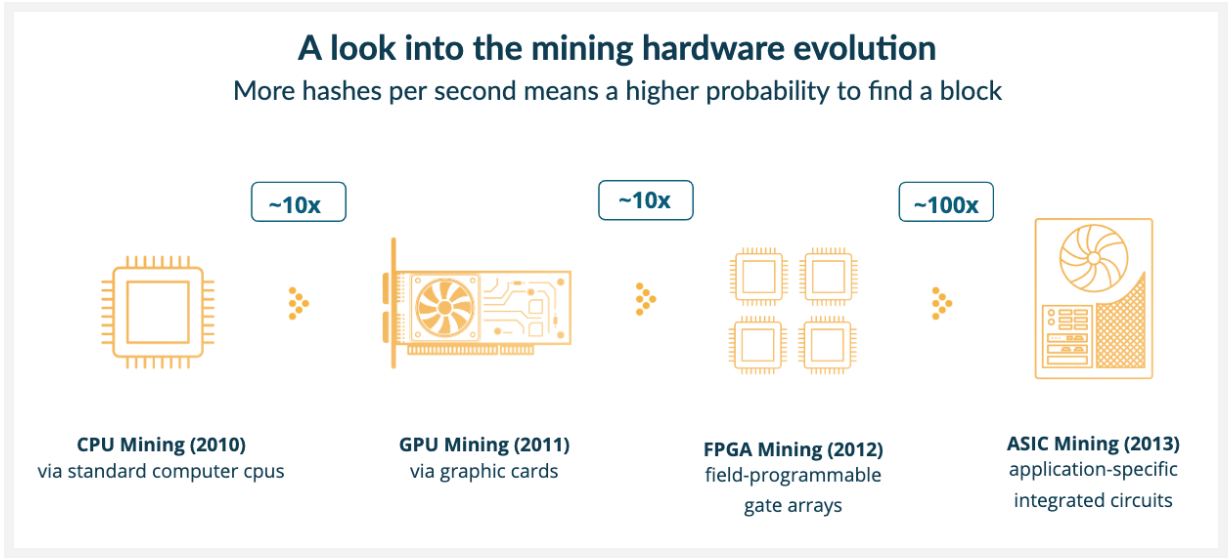
Most developers did not anticipate the developments of the ingenious chip design industry, and today, almost all of the top cryptocurrencies are in fact mined with ASIC hardware.
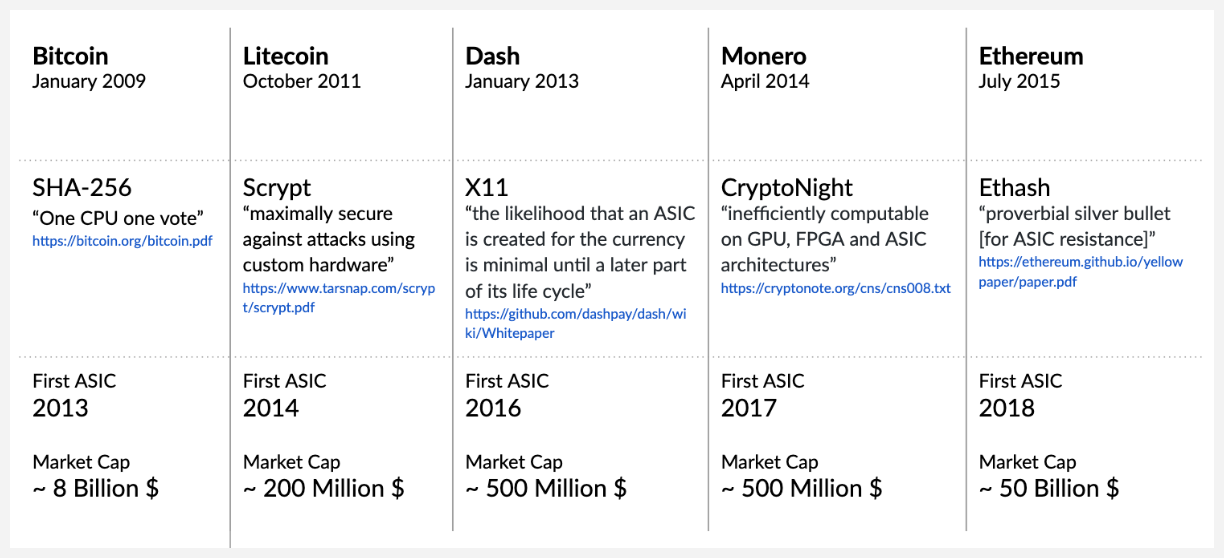
- All networks that reach a certain robust stage will attract this kind of development naturally, and it can actually be a sign of network health. (That is if the ASICs came after the network launch, not before.)
- No mining algorithm is truly ASIC resistant. There are developers out there that want to tackle the circumstance of static algorithms than can be cracked, for example ProgPoW, but nothing has been released and/or deployed into a major network as of this time.
- The list of protocols that still retained a thorough cycle of development and enough user traffic to sustain its independence after an ASIC-resistance fork, is short.
As outlined by our Head of Operations in “What you need to know about GPU mining” article, and our general ”GPU vs ASIC” article, GPUs do have their applications:
“GPUs were already important technological components well before cryptocurrency was a thing, and there’s no reason for this to change. They are multipurpose tools that might be fairly called a Swiss Army Knife of computing. From smartphones to personal computers to artificial intelligence research, a GPU is a flexible jack-of-all-trades in the computing world. It just happens to excel at crypto mining as well.”
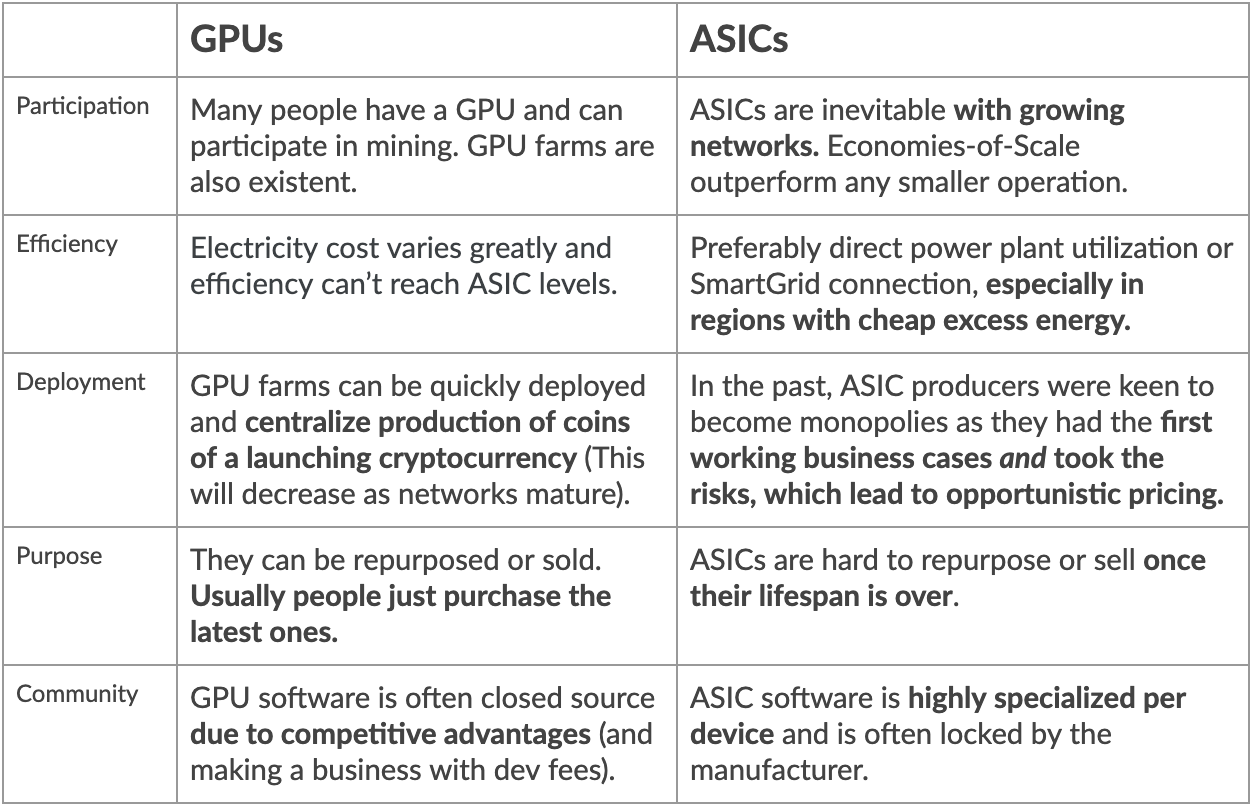
“There’s never going to be a final one-time software fix to kill all ASICs — it’s a Fata Morgana, the last little straw held on tightly by the highly desperate GPU miner community — including, for a long time, myself. All GPUs, by their very technical definition are an assembly of ASICs themselves. It’s always going to be a cat-and-mouse game. Like it has always been in the soft-& hardware industry and for that matter, in virtually every other aspect of life (think of bacteria and anti bacteria medication).”
@MoneroCrusher
Source
Bitcoin is now 11 years old, and with time, there are observations made about the mining industry in general:
- The lifecycle of ASICs is increasing, as major jumps in efficiency are less likely to occur due to Moore’s law
- The ASIC market is becoming increasingly competitive and balanced as new hardware producers enter the market
- With this there is a decrease in opportunistic pricing and less chance for monopolies to establish
Among others, the BetterHash protocol and Stratum v2 by braiins promise great advancement to decentralize a protocol on the pool level.
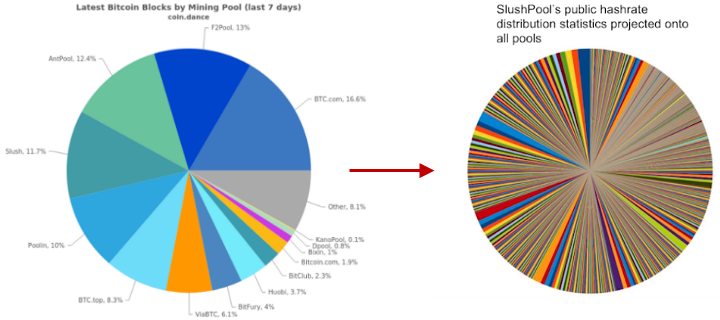
Mining pool hashpower distribution, versus Slush Pool’s miner distribution projected onto every pool.
Source
- Large-scale miners make huge investments by purchasing and/or partnering with chip designers. Extracting a profit as a business goes directly against the incentive of 51% attacking a network, as businesses would ruin their own income stream, and/or start mining against themselves.
- In theory, a continual hashing algorithm update process keeps a network ASIC resistant. In practice, it’s usually a centralized decision being done in the dark (by the protocol developers) that breaks previous network infrastructure (nodes) and creates a high maintenance window for adoption.
- A complete focus on CPU and GPU purposed hashing algorithms also opens up other vectors of attack and extortion, such as the possibility of arising Botnets that infest entire networks, industries as well as individuals. Note: Efficient mining requires a lot of memory, which can be difficult to hide in infected computers and disqualifies many low-end machines such as IoT devices.
- Making an algorithm CPU heavy will not necessarily incentivise people to mine it with their home computers, as profitability will still not be enough to hold it up due to household electricity costs, except people who are willing to mine unprofitable for the sake of the network.
“… Monero is like this. Having started with a typical resistant algorithm, Bitmain ended up developing specialized hardware for it anyway, so “they” decided to spontaneously fork and change the algorithm. This is of course, fine, but the most important distinction here is this is not decentralized, at all, whatsoever, no matter what anyone tries to tell you … Furthermore, this can’t go on forever. The network can’t keep shutting down old nodes just to hard-fork to a new algorithm. You need a robust and immutable set of code moving forward so infrastructure can be built on top of the network that won’t get disabled by some spontaneous hard-fork out of desperation.”
@StopAndDecrypt
Source
Let’s agree that …
- Both ASIC and GPU producers have temporary monopolies on mining, they just impact different cryptocurrency life cycles.
- Large miners always outcompete small miners with Economies-of-scale
- ASICs are probably inevitable
A robustly growing network always profits from specialisation and automation
Let’s try to …
- Target a low entry barrier for ASIC producers to encourage competition and balance the scales.
- Provide long term stability for the mining ecosystem to mature quickly.
- Not stifle business adoption of a cryptocurrency protocol by making it hard to employ in the long-term
“… The strategy of hard-forking ASICs off of a network is going to lose potency the more it happens, because chip designers do have the ability to make chips that are flexible, anywhere from slightly flexible to highly flexible, with each piece of flexibility costing only a bit of performance. The Monero devs have committed to keeping the same general structure for the PoW algorithm, and because of that commitment we believe that you could make a Monero miner capable of surviving hard forks with less than a 5x hit to performance.
@SiaTech
Source
Want to know more about the future of crypto mining?
Read the article of our CEO, Marco Streng.
[ad_2]
Source link


